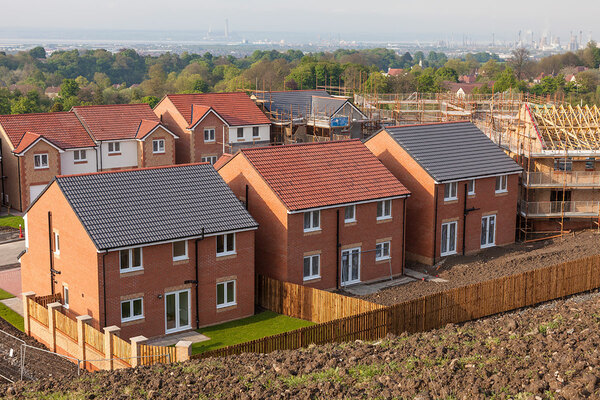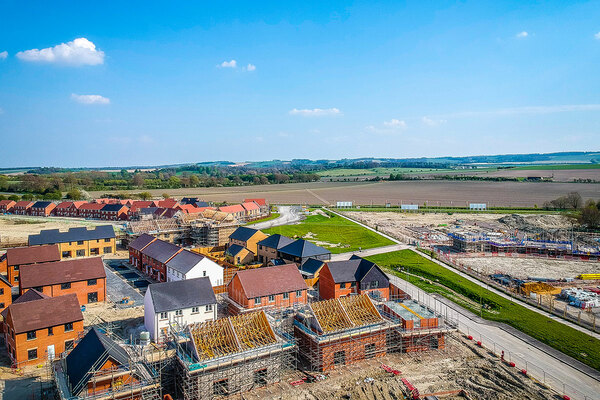You are viewing 1 of your 1 free articles
The story explained: what are First Homes and will they become a major part of the housing mix?
The government recently announced plans to press ahead with its First Homes policy. But what is it and how will it work? Dominic Brady takes a closer look
What is First Homes?
Conceived ahead of the 2019 general election, First Homes is what the government now calls its “preferred discounted market tenure”. The policy offers first-time buyers a minimum discount of 30% against market value limited at properties below £250,000 – or £420,000 in Greater London. In some areas, the government will allow minimum discounts to be raised to 40% or 50% if councils can demonstrate a need for this.
The government has said that First Homes should account for at least 25% of affordable housing units delivered by developers through planning obligations, chiefly through Section 106. A pilot scheme for First Homes is running alongside the latest instalment of the Affordable Homes Programme.
Hang on – is this just Starter Homes: mark II?
You would be forgiven for thinking First Homes is the second coming of the ignominious Cameron-era Starter Homes. Indeed, the limits on discounts are similar to those for Starter Homes (£250,000 and £450,000 in London) and the scheme is specifically aimed at first-time buyers. Starter Homes was a catastrophe, failing to deliver a single home despite a promise of 200,000 new homes. Oh, and an enormous £174m was spent as well.
Unlike Starter Homes, First Homes offers a minimum discount of 30%, compared to 20%. The government also appears to have scrapped the age limit on the scheme, which disqualified anyone over the age of 40. Another important difference is that the discounts will be passed on if the home is sold on to another first-time buyer.
So how many homes is it expected to deliver?
Perhaps because of the failure of Starter Homes, the government is reticent to attach a number to the scheme. Jeremy Pocklington, permanent secretary at the Ministry of Housing, Communities and Local Government, told a select committee last year that there is “too much uncertainty” to be making predictions yet. He suggested government will assess the pilot results before coming up with a target.
What are housing associations saying about it?
The overwhelming response from the sector is concern. Several organisations, including the National Housing Federation and the G15, have voiced fears that funding the policy initially through Section 106 obligations could eat into the amount of social housing delivered.
This is because Section 106 remains a key tool for funding social housing delivery. Statistics from December 2020 showed that Section 106 planning agreements funded 52% of all affordable housing delivery in 2019/20, up from 49% in the previous year. It’s difficult to see how earmarking 25% of Section 106 agreements for First Homes would not be to the detriment of social housing numbers.
In numbers
£250k
Property value limit for the policy outside of London
£420k
Property value limit in London
Will this help ‘level up’ the housing sector?
As it was one of the first major new housing policies to be introduced under the Boris Johnson administration, you’d expect there to be a focus on ‘levelling up’, given the government’s repeated commitments to this agenda.
Whitehall’s limit of £250,000 for areas outside of London could be problematic. Research by Savills in 2020 said that councils in the Midlands and the North will need to lower value caps further to target households that are frozen out of the housing market and cannot raise enough for a deposit. Savills says that setting the limit at £250,000 means the people on higher incomes will benefit from discounts and that the cap should be lowered to target just those on lower incomes.
What next for First Homes?
In May, housing minister Christopher Pincher confirmed that the policy will be introduced from 28 June. He said transitional arrangements will be applied to local land neighbourhood plans that have been submitted for examination before that date. Government says that the new requirement for 25% of all affordable homes to be First Homes will now apply to sites with full or outline planning permission in place before 28 December, although councils should allow developers to introduce First Homes to the tenure mix if they wish.
Sign up to our Development Summit
Amid the housing crisis and with increasing demands on local authorities, developers and housing associations to deliver more homes, the Inside Housing and Homes England Development Summit brings together the public and private sector to collaborate towards the effective delivery of homes across England.
This is not a conference. It is a business meeting of decision-makers on delivery and how to build more quality homes.
To find out more, click here.












